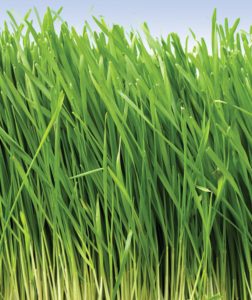
In the 1930’s, agricultural scientist, Charles F. Schnabel noted very high growth and fertility rates in mice after they were fed wheatgrass sprouts. Around the same time, surgeons and physicians in highly esteemed American hospitals recorded numerous healing phenomena by using this “simple” herb. Schnabel noted that ailing hens fed fresh, young wheatgrass recovered quickly, grew faster and fertility doubled compared with healthy hens fed standard diets. His passion inspired a body of wheatgrass research that continues to this day.
The Chlorophyll Myth In 1995, Dr. Chris Reynolds, an Australian medical practitioner, after witnessing rapid improvement and pain relief after applying wheatgrass extract to an elderly patient’s leg ulcer, began testing it on other medical conditions and injuries. The results left him with no doubt about its remarkable healing properties. In response to claims that chlorophyll was responsible, he said:
“The healing effects of our wheatgrass extract are not due to chlorophyll, because it doesn’t contain any, but there are many biological activities at work. For instance, many ligands in the extract are known to influence gene expression of cellular receptors which can assist recovery of damaged cell dyscunctions.”
We also know that juicing does not extract all bioactives from wheatgrass sprouts, but our extraction process does.
Finally, there is no chlorophyll in our extract. This is not important because chlorophyll has no therapeutic ability. Also, fresh wheatgrass juice can be difficult to ingest because of its odour and taste, whereas wheatgrass extract (Supershots) is quite tasty and readily tolerated by all ages, including babies and infants.
Finally, our wheatgrass extract is shelf-stable and effective for at least two years if stored at room temperature.
>>For remarkably more information about the healing properties of wheatgrass extract, please visit Dr. Chris Reynolds’ website.
